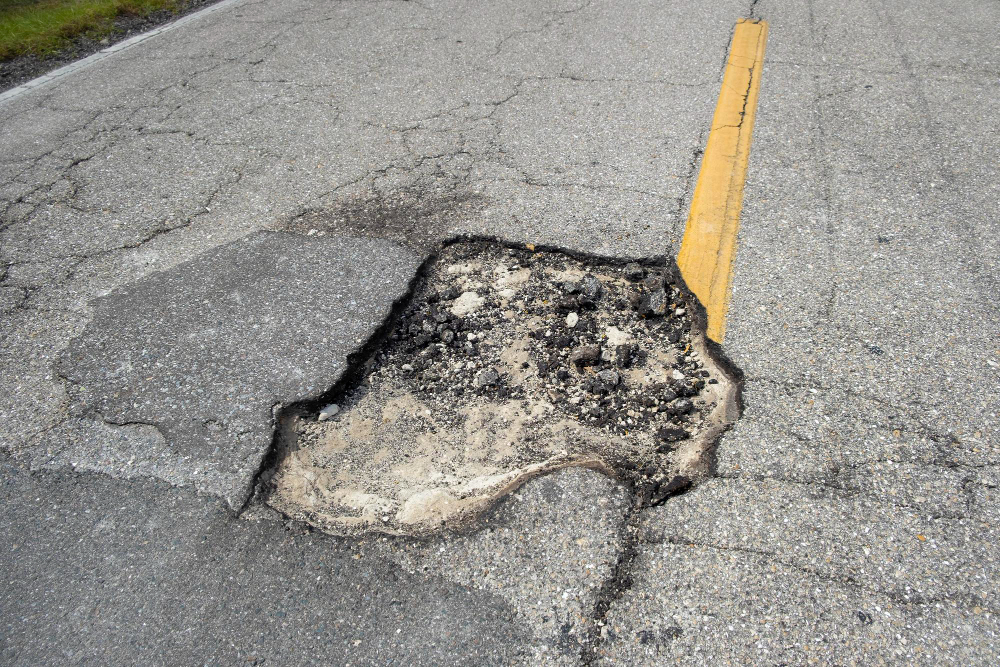
Asphalt is a durable and cost-effective material, making it a popular choice for everything from residential driveways to large commercial parking lots. However, despite its resilience, it's not indestructible. Exposure to the elements, heavy traffic, and the passage of time can all lead to various forms of damage. Addressing these issues promptly is crucial for maintaining the safety, appearance, and longevity of your pavement.
Understanding the different types of asphalt damage can help you identify problems early and take the right steps to fix them. This guide will walk you through the most common issues property owners face, explain their causes, and outline the best methods for asphalt repairs. Whether you're dealing with minor cracks or more significant structural problems, knowing how to respond can save you time and money on more extensive repairs down the road.
One of the most recognizable types of asphalt damage is alligator cracking, also known as fatigue cracking. This issue gets its name from its appearance—a network of interconnected cracks that resemble the scales on an alligator's back.
Alligator cracking is typically a sign of structural failure. It often occurs when the sub-base, the layer of material beneath the asphalt, is weak or has been compromised. This can happen due to poor initial installation, inadequate drainage leading to water saturation, or simply the stress of repeated heavy loads. When the foundation can no longer support the weight placed on the surface, the asphalt flexes and eventually fractures, creating the signature cracking pattern.
Unfortunately, a simple crack filler or sealcoat won't solve the underlying problem of alligator cracking. The only effective, long-term solution is to remove the damaged section of asphalt entirely. This process, known as full-depth patching, involves:
Addressing alligator cracking this way restores the structural integrity of the pavement and prevents the problem from spreading.
Potholes are bowl-shaped depressions that can form in asphalt pavement. They are not only an eyesore but also a significant safety hazard for both vehicles and pedestrians. If left untreated, potholes will continue to grow, leading to more costly damage.
Potholes usually start with small cracks in the asphalt surface. Water seeps into these cracks and penetrates the underlying layers of the pavement. In places like Orlando, FL, frequent rain can accelerate this process. The water weakens the sub-base, and the pressure from traffic causes the surface to collapse, forming a pothole. The cycle of water infiltration and traffic stress causes the pothole to expand over time.
The best method for pothole repair depends on the size and severity of the hole.
Promptly repairing potholes is essential to prevent further deterioration and avoid potential liability issues.
Linear cracks run either parallel (longitudinal) or perpendicular (transverse) to the direction of the pavement. While less severe-looking than alligator cracking, these cracks still pose a threat to your asphalt's health.
For smaller linear cracks (less than half an inch wide), the most effective solution is crack sealing. This involves:
The sealant fills the void and remains flexible, accommodating the pavement's movement with temperature changes. This prevents water from entering the crack and causing more significant damage, like potholes or alligator cracking. For larger cracks, a more extensive patch may be required.
Block cracking appears as a series of large, rectangular cracks on the asphalt surface, typically covering a wide area.
This type of cracking is usually a sign of aging. As asphalt gets older, the binder that holds the aggregate together becomes brittle and loses its flexibility. The pavement can no longer expand and contract effectively with temperature changes, causing it to shrink and form block-shaped cracks. It's most common in areas with low traffic.
The repair strategy for block cracking depends on its severity.
Upheaval refers to a localized upward bulge in the pavement, while a depression is a low area where the pavement has settled.
Both upheaval and depressions require a full-depth patch. The affected area must be removed, and the underlying problem in the sub-base must be addressed. For upheaval, this may mean removing expansive soil or tree roots. For depressions, it involves filling and re-compacting the settled area before applying new asphalt.
Maintaining your asphalt pavement is key to protecting your property's value and ensuring safety. By regularly inspecting your driveway or parking lot for these common types of damage, you can catch problems early and address them before they become major expenses.
If you've noticed cracks, potholes, or other issues with your pavement, it's time to call in the professionals. For those needing reliable asphalt repairs in Orlando, FL, our team at Florida Sealcoating has the expertise to diagnose the problem and provide a lasting solution. We use high-quality materials and proven techniques to restore the integrity and appearance of your asphalt surfaces.
Don't wait for minor damage to turn into a major headache. Contact Florida Sealcoating today for a free estimate and let us help you keep your pavement in top condition.